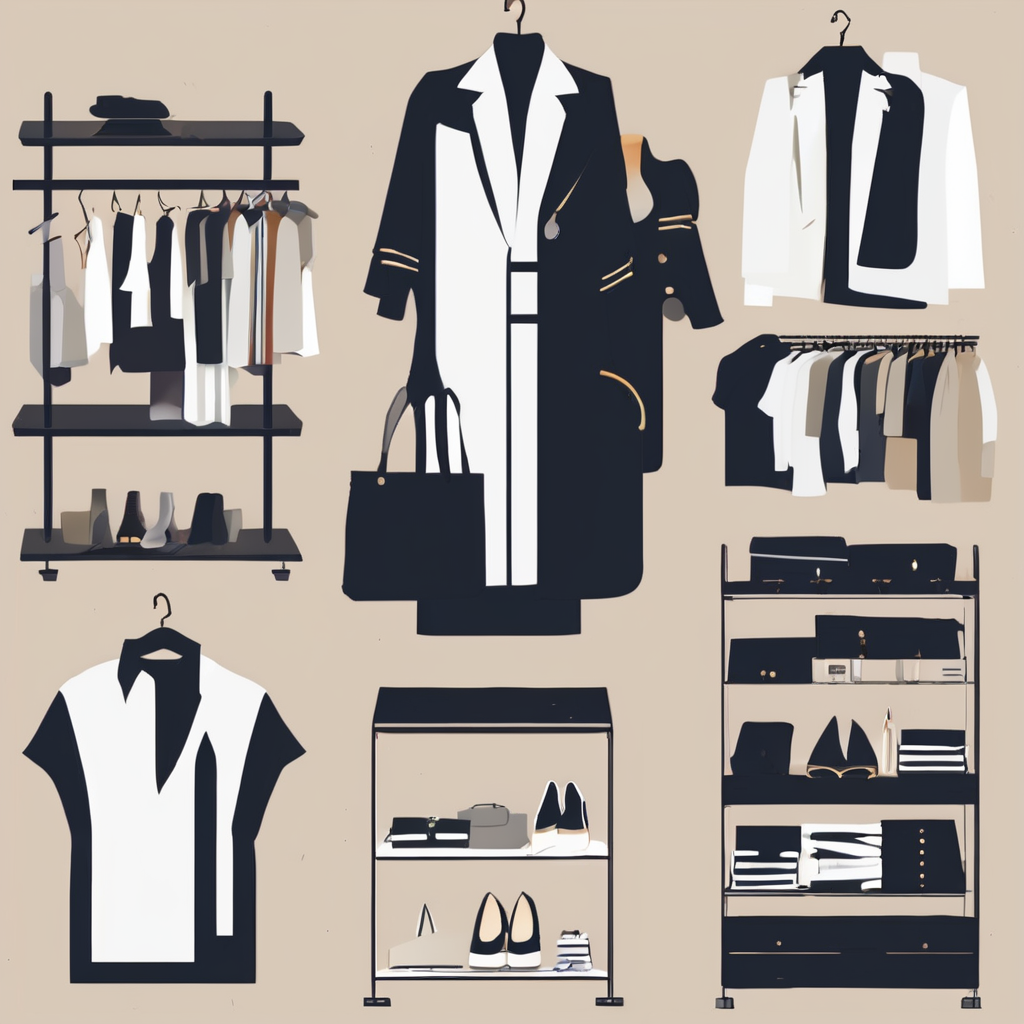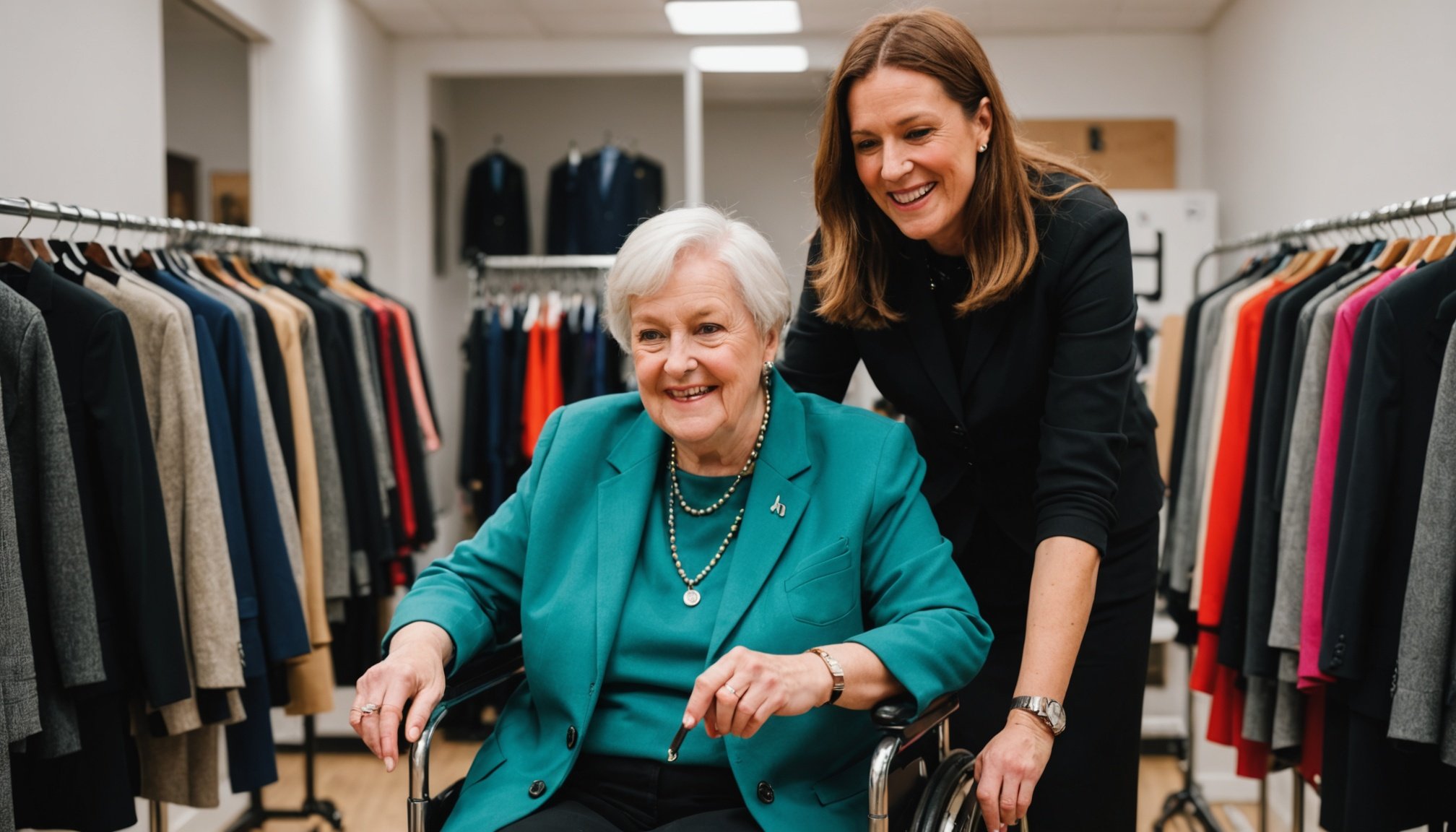Overview of Tailoring Services for Disabled Women in the UK
Tailoring services for disabled women play a crucial role in enhancing both comfort and style. These services focus on creating clothing that suits various needs, offering not only aesthetic appeal but also practicality. The significance lies in the ability to provide specialized fashion that accommodates diverse abilities and preferences, ensuring that individual requirements are met.
Traditionally, the fashion industry has faced criticism for lacking inclusivity. However, efforts are now being made to address this gap. Inclusive fashion initiatives aim to embrace disabled women by considering their unique needs, providing them with more options that align with emerging trends while ensuring functionality. This marks a positive shift towards a more equitable fashion landscape.
Topic to read : The Essential Guide to Wearing White at UK Weddings: Rules and Etiquette Explained
The importance of specialized clothing cannot be overstated. It offers a tailored approach that accommodates unique body shapes and mobility needs without sacrificing style. By focusing on both the aesthetic and functional aspects of clothing, tailoring services help disabled women express their identity confidently. This tailored clothing is not merely about comfort; it also empowers women by providing them with choices that reflect their personal style and enhance their quality of life.
Types of Tailoring Services Available
Tailoring is an art that balances customization with practicality, offering diverse tailoring types to suit every sartorial need. Variations in services cater to different preferences and accessibility requirements.
In the same genre : Discover the Ultimate Guide to Trendy Maternity Fashion in the UK: Your Go-To Spots for Stylish Styles!
Local Tailoring Shops
Local tailoring shops remain a staple for those seeking personalized interactions and immediate accessibility. These establishments specialize in customizations such as altering garments for a perfect fit or rejuvenating old clothes with a modern twist. Local shops often emphasize hands-on service and detailed work, making them a preferred choice for those prioritizing quality and a personal touch.
Online Custom Tailoring Services
Embracing technology, online custom tailoring services offer a modern twist to traditional tailoring. These platforms provide a wide array of customization options at users’ fingertips, harnessing digital measurements and virtual consultations. Benefits include a broader selection, from styles and fabrics to unique designs, catering to a global market. Online services often offer competitive pricing and time-saving solutions by delivering tailored garments directly to one’s door.
Mobile Tailoring Services
For unparalleled convenience, mobile tailoring services bring alterations and fittings to your location. These services are tailored for those with hectic schedules or accessibility challenges, offering bespoke customization without the need to visit a shop. This approach combines accessibility with the benefit of flexibility, meeting tailoring needs wherever you may be.
Features of Specialized Clothing
Specialized clothing offers innovative solutions for those seeking both style and functionality. At the forefront of disability-friendly fashion, adaptive clothing focuses on essential features that cater to diverse needs. This includes easy closures such as magnetic buttons or Velcro, which replace traditional fasteners, making it easier for individuals with mobility challenges. Additionally, adjustable fits achieved through drawstrings or elastic bands ensure that garments can be personalized for comfort and convenience.
A crucial aspect of specialized clothing is the careful choice of materials and technology. Fabrics are often selected for their breathability, stretch, and softness, enhancing both the comfort and wearability of these garments. Technology also plays a role, with temperature-regulating materials being incorporated to suit various climates and personal needs.
Design considerations are paramount, with attention given to reducing the complexity of donning and doffing clothing. For instance, side zippers or wrap styles can alleviate the challenges faced by individuals with dexterity issues. Furthermore, disability-friendly fashion often incorporates discreet openings for medical devices or adaptive aids, ensuring both utility and style. These thoughtful touches transform the way clothing empowers the wearer, blending functionality with aesthetic appeal.
Tips for Finding the Right Tailoring Service
Choosing the right tailoring service requires careful consideration, especially when accommodating specific needs like disabilities. To ensure an excellent fit, start by assessing a tailor’s experience with disabled customers. Determine whether a tailor has successfully adjusted garments for wheelchair users or people with different mobility challenges. This indicates their understanding of unique tailoring requirements.
When researching a service, ask key questions to evaluate their suitability. For instance, inquire about past adaptations they’ve completed for customers with disabilities. Another important question: Do they have adjustable fitting spaces in their shop? Such insights help ascertain their capability and preparedness for diverse needs.
Don’t overlook the importance of reviews and recommendations. Previous customers’ experiences can provide honest insights into the service quality and reliability. Look for feedback specifically mentioning tailored accommodations for disabilities. Also, consider asking for referrals from disability support groups, which can highlight tailors who are sensitive and experienced.
Finally, consider visiting the tailoring service in person. This allows you to observe their workspace and ask any additional questions. By combining thorough research with in-depth inquiries, you ensure that the chosen service aligns with your needs.
Testimonials and Reviews
Reading through customer reviews offers invaluable insights into the real-world effectiveness and appeal of specialized fashion services. Tailored experiences, as shared in these reviews, highlight the substantial impact that personalized fashion can have on an individual’s style and confidence.
Real-Life Experiences
When customers share their success stories, a common theme emerges: satisfaction with the attention to detail in tailoring services. For many, the transformation is not just in their wardrobe but also in how they perceive themselves. Customers repeatedly emphasize how these tailored experiences boost their self-esteem and provide a better fit than off-the-rack options.
Impact of Specialized Fashion on Individuals
Specialized fashion services significantly enhance individuals’ quality of life. By delivering garments that cater to specific body shapes and personal preferences, individuals feel both comfortable and fashionable. This personalized approach ensures customers see themselves reflected in their clothing, leading to a profound impact on their confidence and daily interactions.
Comparing Different Service Providers
Analyzing reviews across various providers shows a spectrum of strengths and weaknesses. While some services excel in their range of options and customer service, others may fall short in delivery times or consistency. Such comparative insights help prospective customers make informed decisions about the service that can best provide them with tailored experiences.
Visual Examples of Specialized Fashion
Access to visual inspiration plays a crucial role in the evolving landscape of adaptive clothing. It not only aids in understanding the designs but also highlights inclusive designs that cater to diverse needs. Various notable brands have embraced innovation by producing styles that combine functionality with fashion.
Highlighting innovative designs from prominent names such as Tommy Hilfiger Adaptive and Nike FlyEase, these brands have set benchmarks by integrating style with ease of access. These collections display an impressive range of adaptive features—like magnetic closures and easy-on, easy-off footwear—demonstrating a strong commitment to inclusivity.
On another note, the spotlight shines brightly on local designers making significant contributions to the adaptive fashion scene. Their expertise in crafting adaptive wear showcases a level of personalisation and understanding of community needs that larger brands might overlook. For instance, designers creating universally accessible clothing items offer functional benefits, such as adjustable hemlines or garments with targeted support.
Visual aids are indispensable in appreciating clothing functionality. They provide vital insights into how adaptive clothing can harmoniously blend with mainstream fashion, ultimately making it easier for everyone to incorporate these styles into their daily wardrobe.
Advocacy for Inclusivity in Fashion
In recent years, fashion advocacy has taken significant strides toward promoting inclusivity, particularly for women with disabilities. Advocacy groups have been instrumental in bringing tailored fashion to the forefront, ensuring that disabled women are not merely an afterthought in the fast-paced world of fashion. These organisations strive to emphasise the significance of personalised, adaptive fashion solutions, offering a diverse range that reflects individual needs and preferences.
Community support plays a crucial role in amplifying inclusivity efforts. Through awareness-raising activities, such as workshops and fashion shows, communities can help reshape perceptions by highlighting that fashion is for everyone, regardless of ability. These initiatives foster an inclusive environment, encouraging discussions and driving positive change.
Looking to the future, the fashion industry is expected to continue evolving towards greater inclusivity. Designers and brands are increasingly recognising the importance of breaking down barriers and responding to the needs of all consumers. This shift not only opens new market opportunities but also enhances the sense of belonging and self-expression for those traditionally underserved. With community impact and advocacy as driving forces, the future of fashion looks more inclusive than ever before.











